
Beethoven’s Eroica 2022/2023 SEASON October 13 – 16, 2022
Completely engaged.
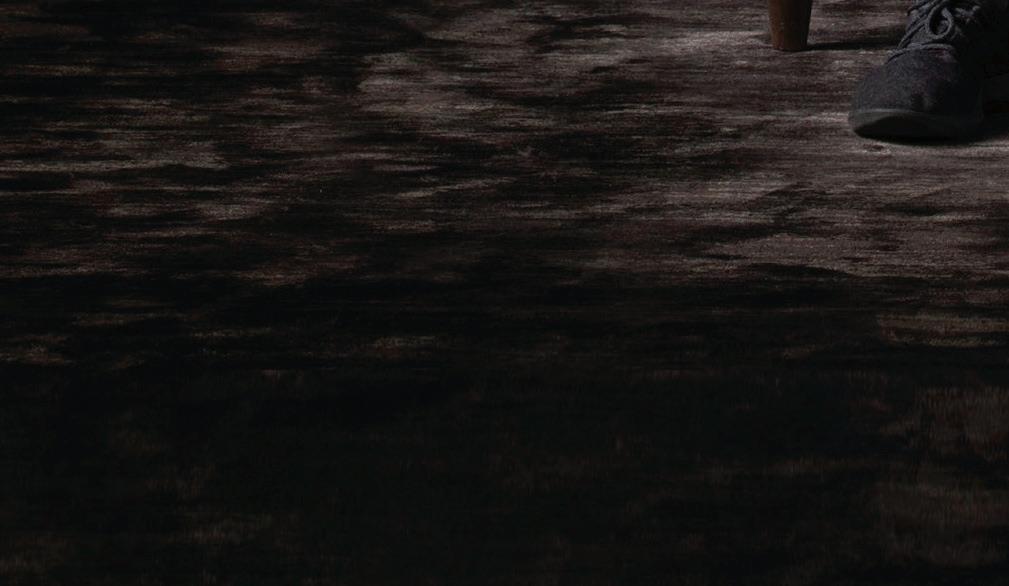

award-winning journalist who has lived in Paris, Santa Fe, and New York City, he arrived in July 2020 via the suggestion of a fellow resident. He’s been delighted ever



a writer, I enjoy spending time alone, and these surroundings are perfect: my apartment is quiet, and the views overlooking the Cleveland Museum of Art are lovely. But by far the best part of Judson is the people. Everyone is so knowledgeable about art and culture. I wanted to have stimulating company to spend my time with, and I’ve found that here. These are wonderful, interesting people,” says Joe.
the full story at judsonsmartliving.org/blog
Judson Park Cleveland Heights | Judson Manor University Circle | South Franklin Circle Chagrin Falls Learn more about how Judson can bring your retirement years to life! judsonsmartliving.org | 216.446.1579 “Expanding my curiosity about lifeis what it’s all about.”
That’s how Joe Coyle feels about his life at Judson Manor. An
since. “As
Read
Joe Coyle
Thank you, supporters!

ongoing
you for making
more
magic
our stage.
Severance
Season possible.
so
Your
generosity brings the
to
We are so delighted to welcome you back to
for another beautiful season! Thank
the 2022/23 Classical
You keep the music playing, and we are
grateful. To learn
and join the Orchestra’s donor family, visit: clevelandorchestra.com/give Scan me!
Proud Designers of Blossom Music Center & Many Projects at Severance Music Center.



2022/2023 SEASON
JACK, JOSEPH AND MORTON MANDEL CONCERT HALL AT SEVERANCE MUSIC CENTER
Beethoven’s Eroica
Thursday, October 13, 2022, at 7:30 p.m.
Friday, October 14, 2022, at 11 a.m.*
Saturday, October 15, 2022, at 8:00 p.m.
Sunday, October 16, 2022, at 3:00 p.m.
Nikolaj Szeps-Znaider, conductor
Karim Al-Zand (b. 1970)
Ernest Bloch (1880–1959)
Ludwig van Beethoven (1770–1827)
Lamentation on The Disasters of War 10 minutes
Schelomo, Hebraic Rhapsody for 20 minutes Cello and Orchestra*
Mark Kosower, cello
INTERMISSION 20 minutes
Symphony No. 3 (“Eroica”) 45 minutes in E-flat major, Opus 55
I. Allegro con brio
II. Marcia funebre: Adagio assai
III. Scherzo: Allegro vivace
IV. Finale: Allegro molto — Poco andante — Presto
Approximate running time: 1 hour 45 minutes
*Not included in Friday’s performance, which is performed without an intermission
Thank you for
Mark Kosower’s performance is sponsored by The Jean, Harry and Brenda Fuchs Family Foundation.
Thursday evening’s concert is sponsored by DLR Group | Westlake Reed Leskosky.
Thursday evening’s concert is dedicated to Marshall and Brenda Brown in recognition of their extraordinary generosity in support of The Cleveland Orchestra.
clevelandorchestra.com THE CLEVELAND ORCHESTRA | 3
COVER: PHOTO BY ROGER MASTROIANNI
silencing your electronic devices. 2022/2023 Season Sponsor
THE MUSIC
Conflict and Resolution
MUSIC CREATED IN TIMES OF WAR so often comes down to the question “Why?” On one level, we question the politics of war, an often confusing and complex web of governmental policies and prejudices. On another is the heartbreaking bloodshed and loss of soldiers and civilians. Why do we so often turn to music and art during these troubled times? Why can a tone poem, symphony, or concerto more clearly express what can be communicated in words, or, more to the point, beyond words.
The three composers on this program each confront — and transform — the question of “why” through pre-established musical forms. Karim Al-Zand’s Lamentation on The Disasters of War (2006) finds renewed resonance in Francisco de Goya’s tortured 19th-century etchings of Napoleon’s invasion of Spain; Ernest Bloch’s World War I–era Schelomo, Hebraic Rhapsody for Cello and Orchestra (1916), invokes the Old Testament wisdom of King Solomon; and Beethoven’s Symphony No. 3 (1803–04) finds inspiration — and later criticism — in the conquests of Napoleon. In contemplat ing war, they illuminate dual sides of humanity: not only to endure through unimaginable hardship, but to find meaning, purpose, and eventually beauty in it.
“It has only become even more pertinent to play these pieces together,” said guest conductor Nikolaj Szeps-Znaider, who was born in Denmark to Polish/
Israeli parents. “There is clearly a Napoleonic connection between the ‘Eroica’ and Al-Zand’s piece, but as well there’s a connection between Schelomo by the Jewish composer Bloch with a modern-day composer of Arabic descent.”
He continued: “What we want to show is the sense of us humans as one, as one humanity. We see that in our age, sadly, more and more this split in our society, and it seems we become less and less able to talk to each other. Or maybe more importantly, we become less and
What we want to show is the sense of us humans as one, as one humanity. — Nikolaj Szeps-Znaider, guest conductor
less able to listen to one another. And, for that reason, I think it’s beautiful that in the first half we have pieces by both sides of a conflict that I hope will soon be resolved, and that should have been resolved long ago.”
Al-Zand’s personal grief over the 2005 death of his cousin during the Iraq war is graphically conveyed from the first pages of his score, which depict the first plate from Goya’s series of etchings, The Disasters of War, documenting Napoleon’s invasion of Spain. Titled “Sad presentiments of what must come to pass,”
Detail from Plate 1 of The Disasters of War, “Sad presentiments of what must come to pass,” Francisco de Goya, 1815.
4 | 2022/2023 SEASON
IMAGE COURTESY OF MUSEO DEL PRADO

it shows an elderly man with lanky, outstretched arms asking something unanswerable. These etchings were created in the decade after Beethoven wrote his “Eroica” Symphony, during which the composer had Napoleon in his mind’s eye. The Jewish liturgical chants of Bloch’s Schelomo, the Hebrew name for the wise King Solomon, pose an emotional and cultural counterpoint in the program.
Beyond thematic connections, the pieces share brooding writing in the lower strings, glimmers of light that only intensify the music’s dark shade but also have momentary windows into a pyrrhic future, not answering the “why” question but coming to live with it.
Plate 18 from The Disasters of War, “Bury them and keep quiet,” Francisco de Goya, 1815.
ELEGY FOR THOSE LOST Szeps-Znaider was led to Al-Zand’s Lamentation from having conducted his widely played Luctus Profugis with the Cincinnati Symphony Orchestra — and wanting to further investigate the composer’s extensive output. The piece represents the changing sensibilities of two artists some 200 years apart. Al-Zand’s earlier music is elegant and witty, seemingly from a different world than Lamentation, suggesting what a seismic impact the external events of war have had on the composer’s inner life. This seems to echo the dichotomy between Goya’s courtly style, publicly embraced by the Spanish monarchy, and the arrestingly stark Disasters of War series, which was published posthumously.
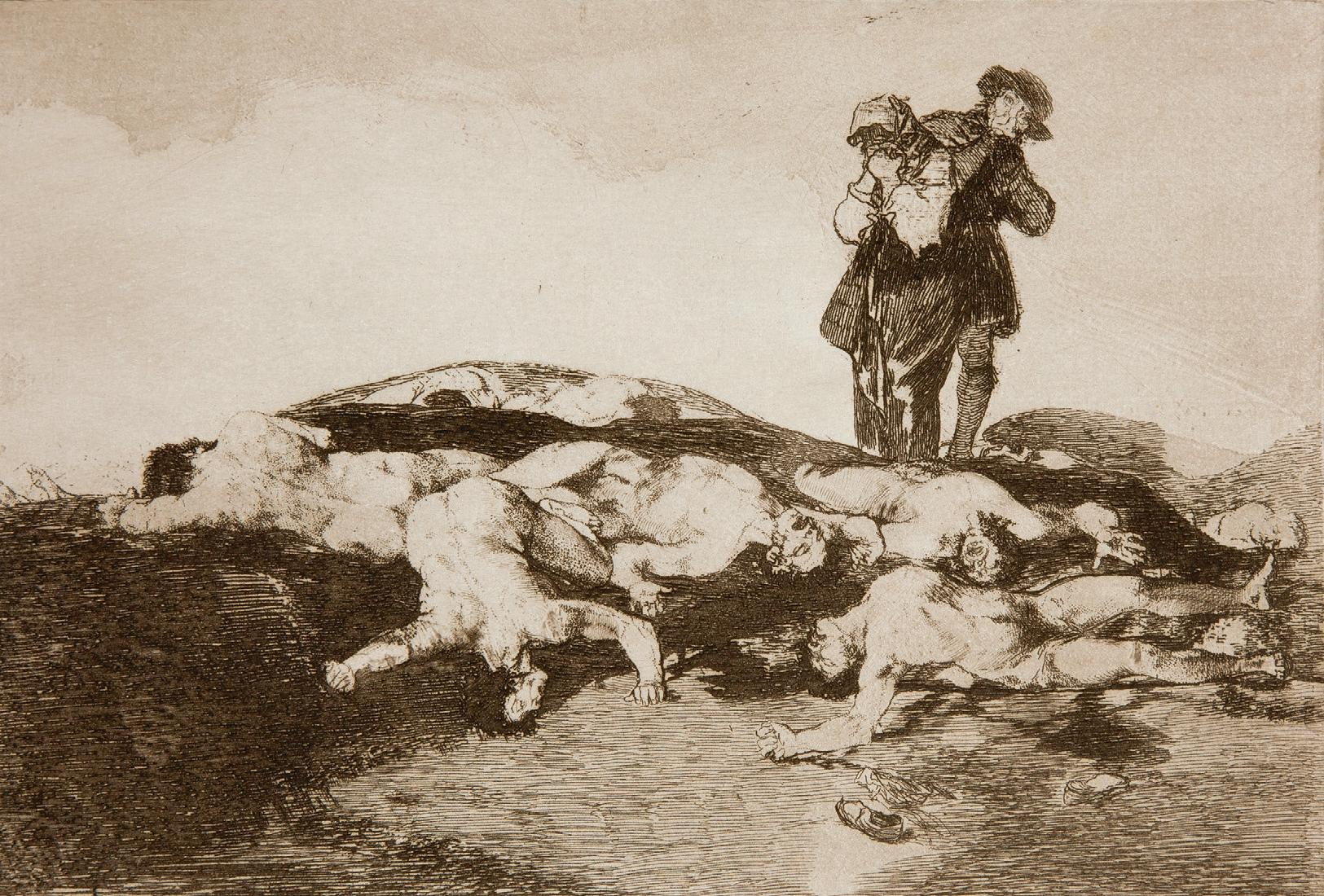
6 | 2022/2023 SEASON THE MUSIC
IMAGE COURTESY OF
MUSEO DEL PRADO
Lamentation on The Disasters of War
By Karim Al-Zand
BORN : 1970 in Tunis, currently lives in Houston, Texas
: 2006
WORLD PREMIERE: The original sextet was premiered in April 30, 2006. This version, for string orchestra, received its premiere in 2011 by Fulcrum Point New Music Project in Chicago. This weekend’s performances mark The Cleveland Orchestra’s first presentations of Lamentation on The Disasters of War
ORCHESTRATION: string orchestra
DURATION: 10 minutes
FRANCISCO DE GOYA (1746–1828) produced the series of 82 etchings known as Los desastres de la guerra (The Disasters of War) during the period from 1810 to 1820, as a reaction to the events which followed Napoleon’s invasion of Spain. His work is both a response to the horrific conflict he witnessed in the Peninsular War and a commentary on the ravages of war in general. What distinguishes The Disasters of War from earlier artistic treatments of bellicose subjects is the unflinching realism of its portrayal (it almost serves as a kind of documentary, eye-witness account) and Goya’s refusal to see either side in the conflict as having absolute moral superiority. Its powerful imagery is dark and violent, its message profoundly pessimistic.
My piece Lamentation on The Disasters of War is an elegy. It is inspired by Goya’s work and its modern-day significance, though it makes no attempt to literally portray the events depicted in the etchings. The piece is dedicated to my late cousin Husam Al-Zand, who was tragically killed in Iraq in 2005; to his surviving wife and children; and to my courageous family still remaining in the region, both in Baghdad and in the growing Iraqi Diaspora. Peace be upon them.
Karim Al-Zand, May 2006
THE CLEVELAND ORCHESTRA | 7clevelandorchestra.com
Ω COMPOSED
Ω
Ω
Ω
—
Born in Tunis, educated in Canada (McGill University) and the U.S. (Harvard), and now a longtime composition professor at Rice University in Houston, Al-Zand wrote the music not with the specificity of an image-byimage gallery tour (as in Mussorgsky’s Pictures at an Exhibition) but rather evoking the general sentiments of the series. He encourages the viewing of the etchings, but not during performances. His musical response has the uncompromising Expressionism of Schoenberg but also the searing introspection of Shostakovich, which is employed to express more than grief over the death of his cousin Husam Al-Zand, but concern for “my courageous family still remaining in the region, both in
Baghdad and in the growing Iraqi Diaspora. Peace be upon them.”
Originally written for string sextet and later arranged for string ensemble (the latter of which is presented this weekend), the piece begins with the instruments questioning and answering each other, evolving into unrelieved dissonance. The peace is manifested by tentative lyricism that defines the final third of the piece — in music that’s too wise to convey false certainty.
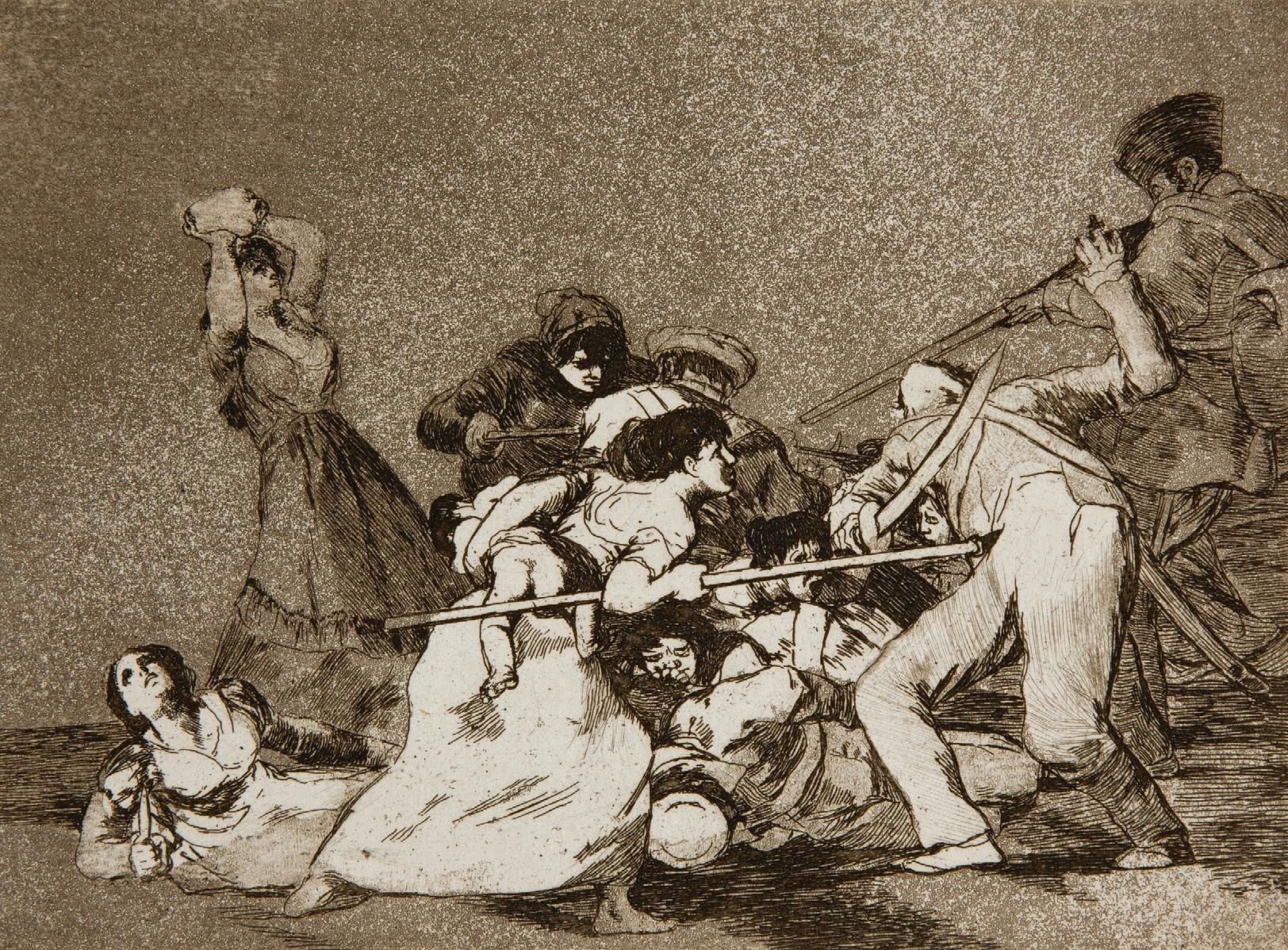
A VOICE OF WISDOM
The weight of wisdom and the far-reaching insights that come with it are what Bloch drew on in Schelomo, a creation
8 | 2022/2023 SEASON THE MUSIC
Plate 5 from The Disasters of War, “And they are like wild beasts,” Francisco de Goya, 1815.
IMAGE COURTESY OF MUSEO
DEL PRADO
Schelomo, Hebraic Rhapsody for Cello and Orchestra
By Ernest Bloch
BORN : July 24, 1880 in Geneva, Switzerland
DIED : July 15, 1959 in Portland, Oregon
COMPOSED : 1916
WORLD PREMIERE: In May 1917, at Carnegie Hall with soloist Hans Kindler and the New York Philharmonic, conducted by Artur Bodanzky
CLEVELAND ORCHESTRA PREMIERE: March 8, 1928, with soloist Victor de Gomez and conductor Nikolai Sokoloff
ORCHESTRATION: 3 flutes (3rd doubling piccolo), 2 oboes, english horn, 2 clarinets, bass clarinet, 2 bassoons, contrabassoon, 4 horns, 3 trumpets, 3 trombones, tuba, timpani, percussion (suspended cymbals, cymbals, tambourine, tam-tam, bass drum, snare drum), 2 harps, celeste, and strings, plus solo cello
DURATION: 20 minutes
IT IS NOT MY PURPOSE , nor my desire to attempt a “reconstruction” of Jewish music or to base my works on melodies more or less authentic. I am not an archaeologist. I hold it of first importance to write good, genuine music, my music. It is the Jewish soul that interests me, the complex, glowing, agitated soul, that I feel vibrating throughout the Bible; the freshness and naiveté of the Patriarchs; the violence that is evident in the prophetic books; the Jew’s savage love of justice; the despair of the preacher in Jerusalem; the sorrow and immensity of the Book of Job; the sensuality of the Song of Songs. All this is in us; all this is in me, and it is the better part of me. It is in all this that I endeavor to hear in myself and to transcribe in my music; the venerable emotion of the race that slumbers way down in our soul.
Ernest Bloch, in a 1917 letter to Boston Symphony Orchestra program annotator Philip Hale
THE CLEVELAND ORCHESTRA | 9clevelandorchestra.com
Ω
Ω
Ω
Ω
Ω
—
that has some distant antecedents but is such a unique synthesis of elements that no major composer attempted anything like it since. The interplay between soloist and orchestra suggest Berlioz’s Harold in Italy, a dramatic symphony featuring a solo viola as the title character, more than a traditional concerto. Meanwhile. the pictorial specificity and orchestral grandeur may be drawn from Richard Strauss’s tone poems. The solo cello represents Solomon — in what the composer described as “a meditative voice, tragically alone” — laboring under the blinding realization that “all is vanity.” The context of being composed
during World War I — amid its senseless origins and world-devastating upheaval — can’t help but be heard in the orchestra. The hectic instrumental writing has been described as a Tower of Babel, or as close as any depiction of an argumentative society that refuses to reach agreement.
Unlike Strauss tone poems, Schelomo unfolds in three designated movements, each played without pause but featuring distinctive treatment of thematic material, some of which comes in broad, Hebraic-flavored melodies. Traditional
Plate 15 from The Disasters of War, “And there is no help,” Francisco de Goya, 1815.

THE MUSIC 10 | 2022/2023 SEASON
IMAGE COURTESY OF
MUSEO DEL PRADO
Symphony No. 3 (“Eroica”) in E-flat major, Opus 55
By Ludwig van Beethoven
BORN : December 1770 in Bonn, Germany
: March 26, 1827, in Vienna
PREMIERE: April 7, 1805,
Vienna’s Theater an der Wien
October 21, 1920, led by
2 flutes, 2 oboes, 2 clarinets, 2 bassoons, 3 horns, 2 trumpets, timpani, and strings
DURATION: about 45 minutes
I must live like an exile. In company I am assailed by the most painful apprehensions, from the dread of being exposed to the risk of my condition being observed. It was the same during the last six months I spent in the country. My intelligent physician recommended me to spare my hearing as much as possible, which was quite in accordance with my present disposition, though sometimes, tempted by my natural inclination for society, I allowed myself to be beguiled into it. But what humiliation when any one beside me heard a flute in the far distance, while I heard nothing, or when others heard a shepherd singing, and I still heard nothing! Such things brought me to the verge of desperation, and well-nigh caused me to put an end to my life. Art! art alone deterred me. Ah! how could I possibly quit the world before bringing forth all that I felt it was my vocation to produce? And thus I spared this miserable life — so utterly miserable that any sudden change may reduce me at any moment from my best condition into the worst. It is decreed that I must now choose Patience for my guide!
Ludwig van Beethoven, from the Heiligenstadt Testament, written in 1802 as he was formulating Symphony No. 3.
THE CLEVELAND ORCHESTRA | 11clevelandorchestra.com
DIED
Ω COMPOSED : 1803–04 Ω WORLD
at
Ω CLEVELAND ORCHESTRA PREMIERE:
Nikolai Sokoloff Ω ORCHESTRATION:
Ω
—
chants, such as “Asher kidshanu” played by solo oboe among other instruments to depict when Solomon is at odds with a cantor, appear; shofarlike calls are an essential part of the piece; and bitterness and despair are prevalent in what Bloch described as his most pessimistic work — though only up to a point. The third movement’s emergence into the key of B-flat is what Bloch described as “a glimpse of heaven.”
From a strictly musical standpoint, one is continually fascinated with how the composer bends time. Initially, the main melody is contoured with triplets — three notes squeezed into a metric length that usually accommodates two — suggesting how Solomon continually sees beyond the temporal realm before him. As the piece goes on, Bloch uses that technique ever more extravagantly, fitting ever more notes into spaces that are usually occupied by far fewer. To the average listener, Bloch’s time-bending techniques create a tension that holds the ear in thrall. The piece sounds remarkably modern, as does so much else in the output of this under-represented though major figure in 20th-century music.
A WATERSHED SYMPHONY
The final work on the program is Beethoven’s ever-modern Symphony No. 3, which Szeps-Znaider rightly called, “one of the watershed moments in symphonic music, one of the most glorious pieces of music ever written.”
But any cause and effect between the Napoleonic wars that began in 1802 and the final composition is hard to pin down, and Beethoven’s works often had a long and circuitous gestation. His politics were fluid and expressed publicly with an eye for not offending his aristocratic sponsors. One of the most-circulated anecdotes of Beethoven’s biography is his dedication of this symphony to Napoleon only to angrily revoke it when Napoleon made himself emperor: “So he is no more than a common mortal! Now he, too, will tread underfoot all the rights of man [and] indulge only his ambition; now he will think himself superior to all men [and] become a tyrant!” Or so he said according to two eyewitnesses of that moment: Ferdinand Ries and Anton Schindler.
Biographers say that Beethoven didn’t completely turn against Napoleon until the bombardment of Vienna in 1809, which had to have been particularly torturous for the composer, coupled with the aural distortions of his hearing loss. In the bigger picture, Beethoven was appalled at the atrocities of the French Revolution — his idealistic belief in the brotherhood of man overcome by the revulsion at the slaughter of innocents that comes with war of any sort. Beethoven scholar Lewis Lockwood credits the second movement, the famous Funeral March, for introducing “death and commemoration into the genre of the symphony for the first time.” The unfiltered intensity of the music lifts the genre out of the more safely packaged Classical-era
12 | 2022/2023 SEASON THE MUSIC


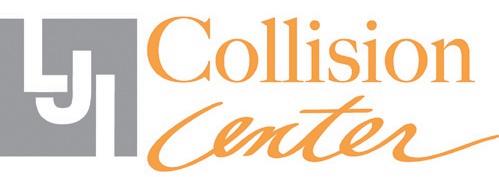


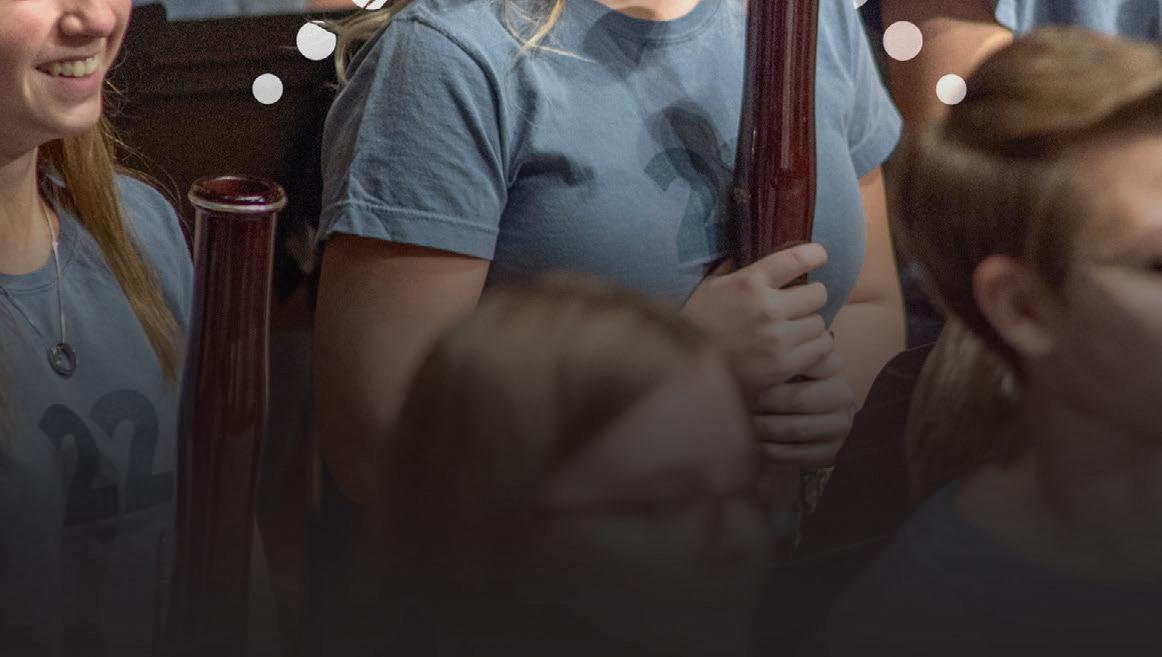


















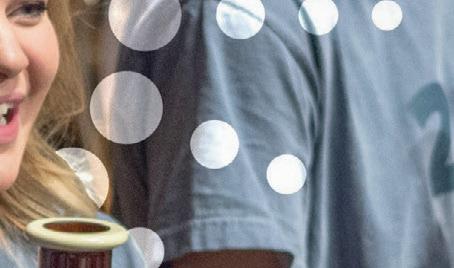








LJI builds confidence in every customer and ensures quality repairs and superior customer service. Our commitment is to achieve and retain customer loyalty for life! 27100 Chagrin Blvd. at I-271 Orange Village (216)364-7100 1640 Lee Rd. at Mayfield Cleveland Hts. (216) 932-7100 TWO LOCATIONS Customer Confidence – Priority One™ ljicollisioncenter.com Customer Confidence – Priority One™ Lauren Angie Jill Strauss fourth generation in the industry missionLJI builds confidence in every customer and ensures quality repairs and superior customer service. Our commitment is to achieve and retain customer loyalty for life! 27100 Chagrin Blvd. at I-271 1640 Lee Rd. at Mayfield NOW TWO LOCATIONS Contemporary Youth Orchestra ROB ER T MULLE R I F YO U’ RE LO OK ING TO create something magical. E P L O R E N L I NEClevelandArtsEvents .com connects you to the region’s vibrant arts and culture scene With just a few clicks, discover hundreds of events made possible in part with public funding from Cuyahoga Arts & Culture.
symphonies of Mozart and Haydn and ushers in the simmering emotions of a new burgeoning Romantic era. Music, which was supposed to be more pleasurable than biting, grew teeth in Symphony No. 3, and along with them a purposeful sense of historic inevitability.
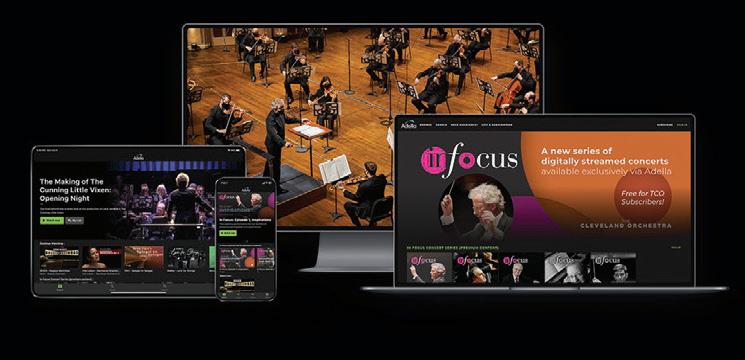
The second movement begins with Beethoven’s fallback template, themeand-variations form, which gives way to a monumental lament in the middle, and then returns to the original theme with ever-more-intensified tragedy, or, to quote Lockwood, crumbling “into short phrases interspersed with silences.” This is one of Beethoven’s greatest inventions, a succession of ideas that don’t seem to belong in the same piece much less in the same movement, yet they unfold seamlessly. One could hear it as a triumph of compositional virtuosity, though the movement is clearly driven
by an inner imperative that demanded compositional virtuosity.
The rest of the symphony is a triumph of diversity amid an expanded, even revolutionary sense of unity. Gustav Mahler’s dictum that a symphony could encompass the entire world has a ready precursor in Beethoven. The heroic first movement leads to the other side of triumph, which is the tragedy conveyed by the previously discussed second movement. From there, the breathless tempo and offhanded wit of the third movement plus the light-hearted final movement borrowed from his Creatures of Prometheus ballet makes the “Eroica” the symphony that has everything.
—David Patrick Stearns
David Patrick Stearns is a music journalist who currently writes for the Philadelphia Inquirer, Classical Voice North America, MusicalAmerica.com, Gramophone magazine, and others. A native of Sycamore, Illinois, he now resides in Brooklyn.
14 | 2022/2023 SEASON
Adella, our streaming service and app, features on-demand portraits, music showcases, behind-the-scenes footage and our flagship In Focus premium concert series, available anytime & anywhere THE CLEVELAND ORCHESTRA SEASON 3 STREAMING NOW! Visit Adella.live to start watching today. THE MUSIC


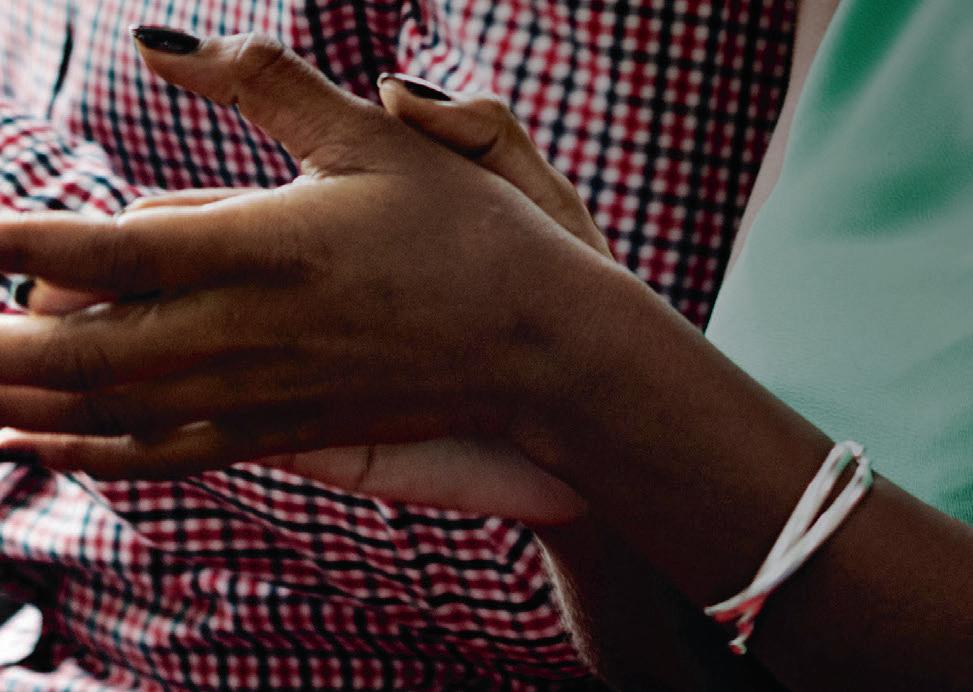

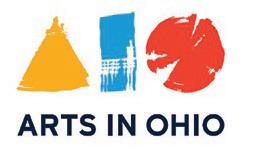



WHERE WILL THE ARTS TAKE YOU NEXT ? VISIT ARTSINOHIO.COM @OHIOARTSCOUNCIL | #ARTSOHIO | OAC.OHIO.GOV State and federal dollars through the Ohio Arts Council supported your arts experience today.

Nikolaj Szeps-Znaider
ACCLAIMED CONDUCTOR Nikolaj Szeps-Znaider enters his second season as music director of the Orchestre national de Lyon this fall. He regularly conducts the world’s leading orchestras, including the Chicago Symphony Orchestra, The Cleveland Orchestra, Germany’s Bamberg Symphony, Orchestre symphonique de Montréal, and the Royal Stockholm Philharmonic Orchestra. More recently, he has led opera productions at the Semperoper Dresden, Royal Danish Opera, and Zurich Opera House.
A virtuoso violinist as well, Mr. SzepsZnaider maintains his reputation with a busy calendar of concerto and recital engagements. During recent seasons, he appeared as soloist with Konzerthausorchester Berlin, Orchestre national de France, and the Vienna Symphony, and performed the complete Beethoven Violin Sonatas with Rudolf Buchbinder at Vienna’s Musikverein.
Mr. Szeps-Znaider enjoys a strong relationship with the London Symphony Orchestra, an orchestra he has worked with extensively both as conductor and soloist. Together they recorded the complete Mozart Violin Concertos, with The Strad praising it as “possibly among the most exquisite violin sound ever captured on disc.”
His extensive discography also includes the Beethoven and Mendelssohn Concertos with Zubin Mehta and the Israel Philharmonic Orchestra, the Brahms and Korngold Concertos with

Valery Gergiev and the Vienna Philharmonic, the Elgar Concerto in B minor with Sir Colin Davis and the Staatskapelle Dresden, the Mendelssohn Concerto on DVD with Riccardo Chailly and Leipzig’s Gewandhaus Orchestra, the Nielsen Violin Concerto with Alan Gilbert and the New York Philharmonic, and the Prokofiev Concerto No. 2 and Glazunov Concerto with Mariss Jansons and the Bavarian Radio Symphony Orchestra. Additionally, Mr. Szeps-Znaider has recorded the complete works of Brahms for violin and piano with Yefim Bronfman.
Passionate about supporting the next generation of musical talent, he is competition president of the Carl Nielsen International Competition in Odense, Denmark.
THE CLEVELAND ORCHESTRA | 17clevelandorchestra.comPHOTO BY LARS GUNDERSEN THE CONDUCTOR
Mark Kosower, cello louis d. beaumont chair
and Toledo, as well as Columbus Pro Musica and the Oregon Mozart Players. During the coronavirus pandemic he performed the complete Bach Cello Suites at Trinity Cathedral in Cleveland to raise money for those affected by Covid-19 as part of his ongoing Bach for Humanity initiative, which aims to bring people of diverse socioeconomic backgrounds together through presentations of Bach’s music.
MARK KOSOWER JOINED The Cleveland Orchestra as principal cello in 2010.

Described as “a virtuoso of staggering prowess” by the Cleveland Plain Dealer, he is a consummate artist, equally known as a recital and concerto soloist and chamber musician. Prior to his appointment in Cleveland, he was solo cellist of the Bamberg Symphony in Germany (2006–10).
In recent seasons, Mr. Kosower has appeared as soloist with the symphony orchestras of Buffalo, Canton, Columbus, Dayton, Indianapolis, Naples, Phoenix,
Mr. Kosower is a frequent guest at international chamber music festivals, including Santa Fe, Eastern Music, North Shore Chamber Music, Japan’s Pacific Music Festival, Colorado College’s Summer Music Festival, and the Seattle Chamber Music Society; and is a soughtafter teacher. He has recorded for the Ambitus, Delos, and VAI labels. For Naxos International, he recorded the complete music for solo cello by Alberto Ginastera, the first cellist to do so.
Born in Wisconsin, Mark Kosower began studying cello at the age of one-and-a-half with his father who studied with Ernst Silberstein, principal cello of The Cleveland Orchestra under George Szell. He later studied with János Starker at Indiana University and with Joel Krosnick at The Juilliard School. Among his many accolades are an Avery Fisher Career Grant, a Sony Grant, and grand prize in the Irving M. Klein International String Competition.
18 | 2022/2023 SEASON
PHOTO BY ROGER MASTROIANNI
THE ARTIST
CONCERT
CONCERT

SATURDAY, NOVEMBER 12, 2022, 8 PM
SATURDAY, NOVEMBER 12, 2022, 8 PM
Jack, Joseph and Morton Mandel Concert Hall Severance Music Center
Jack, Joseph and Morton Mandel Concert Hall Severance Music Center
11001 Euclid Ave, Cleveland, OH 44106
11001 Euclid Ave, Cleveland, OH 44106







The Israel Philharmonic is the leading orchestra in Israel and a world-class symphonic ensemble. Founded in 1936 by famed Polish violinist Bronislaw Huberman, the philharmonic is based in Tel Aviv and performs throughout Israel and internationally.
The Israel Philharmonic is the leading orchestra in Israel and a world-class symphonic ensemble. Founded in 1936 by famed Polish violinist Bronislaw Huberman, the philharmonic is based in Tel Aviv and performs throughout Israel and internationally.
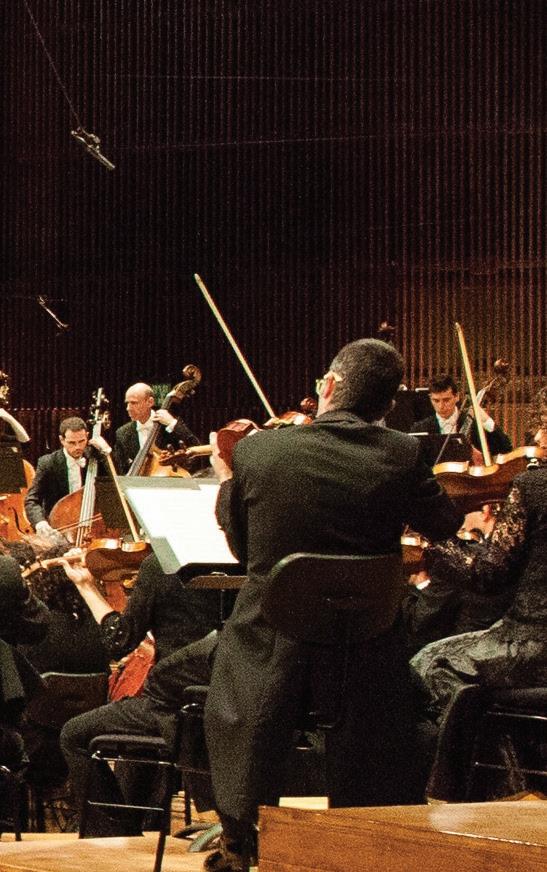

Led by music director Lahav Shani, the program will feature some of the classics by Russian composer Sergei Prokofiev: Symphony No. 1, Romeo and Juliet, and Symphony No. 5.
Led by music director Lahav Shani, the program will feature some of the classics by Russian composer Sergei Prokofiev: Symphony No. 1, Romeo and Juliet, and Symphony No. 5.
The Jewish Federation of Cleveland looks forward to launching the community’s “Israel at 75” celebration series with this performance of the Israel Philharmonic.
The Jewish Federation of Cleveland looks forward to launching the community’s “Israel at 75” celebration series with this performance of the Israel Philharmonic.
TO PURCHASE TICKETS clevelandorchestra.com or 216-231-1111
TO PURCHASE TICKETS clevelandorchestra.com or 216-231-1111
The 2022 tour of the Israel Philharmonic is sponsored by:
The 2022 tour of the Israel Philharmonic is sponsored by:























2023 CAMPAIGN
a program of the Jewish Federation of Cleveland 2023 CAMPAIGN
2023 CAMPAIGN
a program of the Jewish Federation of Cleveland 2023 CAMPAIGN



Let our cast of designers help you decide which style is right for your home. Undecided Where To Sit? 34300 Solon Road | Solon, OH | 440-248-2424 | 800-260-2949 One block south of Rt. 422 & SOM Center Road 9-9 M/Th | 9-5:30 Tu/W/F/Sa | www.sedlakinteriors.com Complimentary Delivery and Set-Up Within 60 Miles. CELEBRATING
NOW IN ITS SECOND CENTURY ,

The Cleveland Orchestra, under the leadership of music director Franz Welser-Möst since 2002, is one of the most sought-after performing ensembles in the world. Year after year, the ensemble exemplifies extraordinary artistic excellence, creative pro gramming, and community en gagement. The New York Times has called Cleveland “the best in America” for its virtuosity, elegance of sound, variety of color, and chamber-like musical cohesion.
Founded by Adella Prentiss Hughes, the Orchestra performed its inaugural concert in December 1918. By the middle of the century, decades of growth and sustained support had turned it into one of the most admired globally.

The past decade has seen an increasing number of young people attending concerts, bringing fresh attention to The Cleveland Orchestra’s legendary sound and committed programming. More recently, the Orchestra launched several bold digital projects, including the streaming broadcast series In Focus, the podcast On a Personal Note, and its own recording label, a new chapter in the Orchestra’s long and distinguished recording and broadcast history. Together, they have captured the Orchestra’s unique artistry and the musical achievements of the Welser-Möst and Cleveland Orchestra partnership.
The 2022/23 season marks Franz Welser-Möst’s 21st year as music director, a period in which The Cleveland Orchestra earned unprecedented acclaim around the world, including a series of residencies at the Musikverein in Vienna, the first of its kind by an American orchestra, and a number of acclaimed opera presentations.
Since 1918, seven music directors — Nikolai Sokoloff, Artur Rodziński, Erich Leinsdorf, George Szell, Lorin Maazel, Christoph von Dohnányi, and Franz Welser-Möst — have guided and shaped the ensemble’s growth and sound. Through concerts at home and on tour, broadcasts, and a catalog of acclaimed recordings, The Cleveland Orchestra is heard today by a growing group of fans around the world.
THE CLEVELAND ORCHESTRA | 21clevelandorchestra.com THE CLEVELAND ORCHESTRA
@ClevelandOrchestra @clevelandorchestra@CleveOrchestra@Cleveorch PHOTO BY ROGER MASTROIANNI
ORCHESTRA
Franz Welser-Möst, MUSIC DIRECTOR
Kelvin Smith Family Chair
FIRST VIOLINS
Peter Otto
FIRST ASSOCIATE
CONCERTMASTER
Virginia M. Lindseth, PhD, Chair
Jung-Min Amy Lee
ASSOCIATE
CONCERTMASTER
Gretchen D. and Ward Smith Chair
Jessica Lee
ASSISTANT CONCERTMASTER

Clara G. and George P. Bickford Chair
Stephen Tavani
ASSISTANT
CONCERTMASTER
Wei-Fang Gu
Drs. Paul M. and Renate H. Duchesneau Chair Kim Gomez Elizabeth and Leslie Kondorossy Chair Chul-In Park Harriet T. and David L. Simon Chair Miho Hashizume Theodore Rautenberg Chair
Jeanne Preucil Rose
Larry J.B. and Barbara S. Robinson Chair
Alicia Koelz Oswald and Phyllis Lerner Gilroy Chair
Yu Yuan
Patty and John Collinson Chair
Isabel Trautwein Trevor and Jennie Jones Chair
Katherine Bormann
Analisé Denise Kukelhan
Gladys B. Goetz Chair
Zhan Shu
SECOND VIOLINS
Stephen Rose*
Alfred M. and Clara T. Rankin Chair
Eli Matthews1
Patricia M. Kozerefski and Richard J. Bogomolny Chair
Sonja Braaten Molloy Carolyn Gadiel Warner
Elayna Duitman
Ioana Missits
Jeffrey Zehngut
Vladimir Deninzon
Sae Shiragami
Scott Weber
Kathleen Collins
Beth Woodside
Emma Shook
Dr. Jeanette Grasselli Brown and Dr. Glenn R. Brown Chair
Yun-Ting Lee
Jiah Chung Chapdelaine
VIOLAS
Wesley Collins* Chaillé H. and Richard B. Tullis Chair
Lynne Ramsey1 Charles M. and Janet G. Kimball Chair Stanley Konopka2 Mark Jackobs Jean Wall Bennett Chair Lisa Boyko Richard and Nancy Sneed Chair Richard Waugh
Lembi Veskimets The Morgan Sisters Chair Eliesha Nelson Joanna Patterson Zakany William Bender Gareth Zehngut
CELLOS
Mark Kosower* Louis D. Beaumont Chair Richard Weiss1 The GAR Foundation Chair Charles Bernard2 Helen Weil Ross Chair Bryan Dumm Muriel and Noah Butkin Chair
Tanya Ell Thomas J. and Judith Fay Gruber Chair Ralph Curry Brian Thornton William P. Blair III Chair David Alan Harrell Martha Baldwin Dane Johansen Paul Kushious
BASSES
Maximilian Dimoff* Clarence T. Reinberger Chair
Derek Zadinsky2
Mark Atherton
Thomas Sperl Henry Peyrebrune Charles Barr Memorial Chair
Charles Carleton Scott Dixon Charles Paul
HARP
Trina Struble* Alice Chalifoux Chair
FLUTES
Joshua Smith* Elizabeth M. and William C. Treuhaft Chair
Saeran St. Christopher Jessica Sindell2 Austin B. and Ellen W. Chinn Chair Mary Kay Fink
PICCOLO
Mary Kay Fink Anne M. and M. Roger Clapp Chair
OBOES
Frank Rosenwein* Edith S. Taplin Chair Corbin Stair Sharon and Yoash Wiener Chair
Jeffrey Rathbun2 Everett D. and Eugenia S. McCurdy Chair Robert Walters
ENGLISH HORN
Robert Walters Samuel C. and Bernette K. Jaffe Chair
CLARINETS
Afendi Yusuf* Robert Marcellus Chair Robert Woolfrey Victoire G. and Alfred M. Rankin, Jr. Chair Daniel McKelway2 Robert R. and Vilma L. Kohn Chair
Amy Zoloto
E-FLAT CLARINET
Daniel McKelway Stanley L. and Eloise M. Morgan Chair
BASS CLARINET
Amy Zoloto Myrna and James Spira Chair
BASSOONS
John Clouser* Louise Harkness Ingalls Chair
Gareth Thomas
Barrick Stees2 Sandra L. Haslinger Chair
Jonathan Sherwin
CONTRABASSOON
Jonathan Sherwin
HORNS
Nathaniel Silberschlag* George Szell Memorial Chair
22 | 2022/2023 SEASON
THE CLEVELAND
Michael Mayhew§ Knight Foundation Chair Jesse McCormick Robert B. Benyo Chair Hans Clebsch
Richard King
TRUMPETS
Michael Sachs*
Robert and Eunice Podis Weiskopf Chair
Jack Sutte
Lyle Steelman2
James P. and Dolores D. Storer Chair
Michael Miller
CORNETS
Michael Sachs*
Mary Elizabeth and G. Robert Klein Chair
Michael Miller
TROMBONES
Brian Wendel*
Gilbert W. and Louise I. Humphrey Chair
Shachar Israel2
EUPHONIUM & BASS TRUMPET
Richard Stout
TUBA
Yasuhito Sugiyama*
Nathalie C. Spence and Nathalie S. Boswell Chair
TIMPANI
Paul Yancich*
Otto G. and Corinne T. Voss Chair
PERCUSSION
Marc Damoulakis*
Margaret Allen Ireland Chair
Donald Miller
Thomas Sherwood
KEYBOARD INSTRUMENTS
Carolyn Gadiel Warner Marjory and Marc L. Swartzbaugh Chair
LIBRARIANS
Michael Ferraguto
Joe and Marlene Toot Chair
Donald Miller
ENDOWED CHAIRS
CURRENTLY
UNOCCUPIED
Elizabeth Ring and William Gwinn Mather Chair Blossom-Lee Chair
Paul and Lucille Jones Chair
James and Donna Reid Chair
Mary E. and F. Joseph Callahan Chair
Sunshine Chair
Mr. and Mrs. Richard K. Smucker Chair
Rudolf Serkin Chair
CONDUCTORS Christoph von Dohnányi MUSIC DIRECTOR LAUREATE Daniel Reith
CONDUCTOR
Sidney and Doris Dworkin Chair
Lisa Wong DIRECTOR OF CHORUSES
Frances P. and Chester C. Bolton Chair
* Principal
Principal
This roster lists full-time members of The Cleveland Orchestra. The number and seating of musicians onstage varies depending on the piece being performed. Seating within the string sections rotates on a periodic basis.

THE CLEVELAND ORCHESTRA | 23clevelandorchestra.com
PHOTO
BY ROGER MASTROIANNI
ASSISTANT
§ Associate Principal 1 First Assistant
2 Assistant Principal
Richard Stout Alexander and Marianna C. McAfee Chair
What do world-class musicians, a globally renowned conductor, and the acoustic and architectural magnificence of Severance have in common? You. The audience we play for, and are simply not the same without. Your unbridled enthusiasm inspires us all to reach the greatest of heights in every performance. We invite you to once again be part of the wonder that is The Cleveland Orchestra: live and in person. All because of you.












SUBSCRIBE TODAY!
Make your choice from three great subscription options and enjoy exclusive benefits throughout the season.
VITAL
Free and easy ticket exchanges
The opportunity to purchase advance parking
10% off at The Cleveland Orchestra Store
Advance notice on concert announcements & offers
Free subscription to Spotlight magazine
Free access to In Focus, our digital concert series, with behind-the-scenes interviews and features
Free access to Adella Premium streaming service & app Money-back guarantee
1 Premier 2Create YourOwn 3
The best seats and the best savings.
Curated packages for as few as three concerts starting at just $66.
Enjoy each concert from the same seats — yours to renew year after year — and it’s our best value at savings of up to 35% off single-ticket prices. If your schedule changes, take advantage of FREE and easy ticket exchanges. Select a concert series and seating preference that fits your schedule and budget.
See more concerts you want? Save 20% on any additional classical concert tickets.
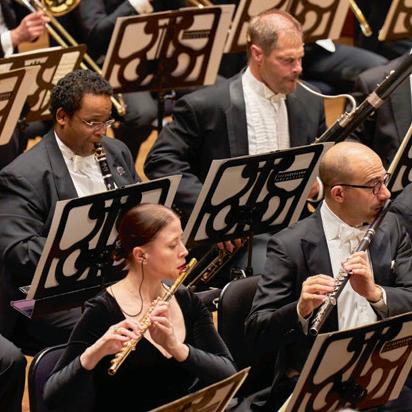
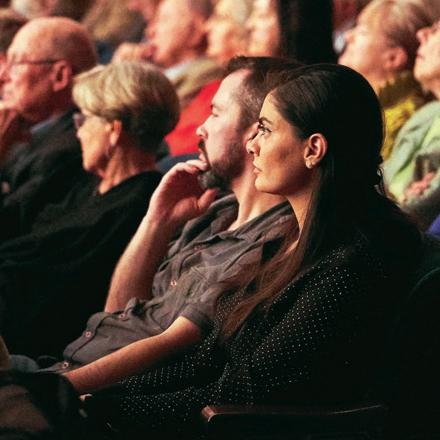

Your schedule and your choices.
Save up to 25% off singleticket prices when you choose 4 concerts or more.
Build a Create Your Own series that perfectly fits your concertgoing lifestyle. Simply choose your favorite concerts, select your dates, then reserve your seats.
Member’s C lub
The most flexibility.
Your all-access pass to concerts at Severance Music Center and Blossom Music Festival.
For a monthly fee of $35, you can purchase tickets for just $10. When you buy as few as five tickets, you save over singleticket prices.
Choose from over 100 concerts a year!
subscriptions@clevelandorchestra.com | 216-231-1111 clevelandorchestra.com/subscribe
Please Join us! SUBSCRIBERS ARE
SUPPORTERS OF THE CLEVELAND ORCHESTRA
OCT 13, 14, 15, 16
BEETHOVEN’S EROICA
Nikolaj Szeps-Znaider, conductor Mark Kosower, cello*
AL-ZAND Lamentation on The Disasters of War
BLOCH Schelomo, Hebraic Rhapsody for Cello and Orchestra*
BEETHOVEN Symphony No. 3 (“Eroica”)

* not part of Friday Matinee concert
OCT 20, 22
AN ALPINE SYMPHONY
Daniel Harding, conductor Antoine Tamestit, viola
WIDMANN Viola Concerto STRAUSS Eine Alpensinfonie
OCT 27, 28, 29
GERSTEIN PLAYS SCHUMANN
Edward Gardner, conductor Kirill Gerstein, piano
BENJAMIN Ringed by a Flat Horizon SCHUMANN Piano Concerto DVOŘÁK Symphony No. 7
NOV 12
ISRAEL

Don’t miss a moment

NOV 17, 18, 19
EL NIÑO
John Adams, conductor
Lauren Snouffer, soprano
Josefina Maldonado, mezzo-soprano
Davóne Tines, bass-baritone
Daniel Bubeck, countertenor
Brian Cummings, countertenor
Nathan Medley, countertenor Cleveland Orchestra Chorus Cleveland Orchestra Children’s Chorus


ADAMS El Niño
NOV 25, 26, 27
THE FIREBIRD
Thomas Søndergård, conductor
Stefan Jackiw, violin
BRITTEN Violin Concerto No. 1
STRAVINSKY The Firebird (complete ballet)
DEC 1, 2, 3
ELGAR AND WALTON
Vasily Petrenko, conductor Behzod Abduraimov, piano*
ELGAR Cockaigne (“In London Town”)
PROKOFIEV Piano Concerto No. 2* WALTON Symphony No. 1 * not part of Friday Matinee concert
WINTER
JAN 5, 7 NIELSEN AND HAYDN

Alan Gilbert, conductor
Paul Yancich, timpani
Liv Redpath, soprano
Justin Austin, baritone
OLIVERIO Timpani Concerto
HAYDN Symphony No. 90


















NIELSEN Symphony No. 3 (“Sinfonia espansiva”)
JAN 12, 13, 14
WELSER-MÖST CONDUCTS SCHUBERT
Franz Welser-Möst, conductor
Joélle Harvey, soprano
Daryl Freedman, mezzo-soprano
Julian Prégardien, tenor
Martin Mitterrutzner, tenor
Dashon Burton, bass-baritone
Cleveland Orchestra Chorus
BERG Lyric Suite*
SCHUBERT Symphony No. 8* (“Unfinished”)





SCHUBERT Mass No. 6
* The movements of the Lyric Suite will be performed in rotation with Symphony No. 8
FEB 2, 3, 4, 5
BOLÉRO
Klaus Mäkelä, conductor
Truls Mørk, cello
SALONEN Cello Concerto
DEBUSSY Images
RAVEL Boléro
FEB 9, 11
MAHLER’S FIFTH

Klaus Mäkelä, conductor
CHIN SPIRA—Concerto for Orchestra

MAHLER Symphony No. 5

CALENDAR
PHILHARMONIC ORCHESTRA
FALL
2023 CAMPAIGN November 12 at 8:00 p.m. Music Director Lahav Shani leads an all-Prokofiev program
of unforgettable music!
FEB 16, 17, 18
BEETHOVEN’S SEVENTH
Herbert Blomstedt, conductor
Emanuel Ax, piano
MOZART Piano Concerto No. 18 (“Paradis”)
BEETHOVEN Symphony No. 7
FEB 23, 24, 25 MOZART AND STRAUSS
Franz Welser-Möst, conductor
MOZART Divertimento No. 2* SCHOENBERG Variations for Orchestra STRAUSS Ein Heldenleben
* not part of Friday Matinee concert
MAR 2, 3, 4, 5
PICTURES AT AN EXHIBITION
Franz Welser-Möst, conductor Víkingur Ólafsson, piano
FARRENC Symphony No. 3 RAVEL Piano Concerto in G major MUSSORGSKY/RAVEL Pictures at an Exhibition
MAR 9, 10, 11, 12
MOZART’S REQUIEM
Franz Welser-Möst, conductor
Christoph Sietzen, percussion Siobhan Stagg, soprano Avery Amereau, alto Ben Bliss, tenor Anthony Schneider, bass Cleveland Orchestra Chorus
STAUD Concerto for Percussion MOZART Requiem
SPRING
MAR 30, 31, & APR 1
INSPIRATION: THE TEMPEST
Thomas Adès, conductor
Pekka Kuusisto, violin
ADÈS Tempest Suite
ADÈS Märchentänze
SIBELIUS Six Humoresques*
SIBELIUS Prelude and Suite No. 1 from The Tempest*
* Certain selections will not be part of the Friday Matinee concert
APR 6, 7, 8
SHOSTAKOVICH’S FIFTH SYMPHONY
Rafael Payare, conductor Jean-Yves Thibaudet, piano
BERNSTEIN Symphony No. 2 (“The Age of Anxiety”)
SHOSTAKOVICH Symphony No. 5
APR 13, 15, 16
MAHLER’S TITAN
Michael Tilson Thomas, conductor Leif Ove Andsnes, piano
DEBUSSY Jeux, poème dansé DEBUSSY Fantaisie for Piano and Orchestra MAHLER Symphony No. 1 (“Titan”)
APR 20, 21, 22, 23
ALL MOZART
Bernard Labadie, conductor
Lucy Crowe, soprano
MOZART Overture to La clemenza di Tito
MOZART “Giunse al fin il momento... Al desio di chi t’adora”
MOZART Ruhe Zanft from Zaide
MOZART Masonic Funeral Music
MOZART “Venga la morte... Non temer, amato bene”
MOZART Symphony No. 41 (“Jupiter”)
APR 27, 28, 29
MARSALIS AND NEW WORLD
Franz Welser-Möst, conductor Michael Sachs, trumpet
MARTINŮ Symphony No. 2
MARSALIS Trumpet Concerto DVOŘÁK Symphony No. 9 (“From the New World”)
MAY 4, 6
WEILERSTEIN PLAYS BARBER
Franz Welser-Möst, conductor
Alisa Weilerstein, cello
LOGGINS-HULL Can You See? BARBER Cello Concerto
PROKOFIEV Symphony No. 4
MAY 14, 17, 20
THE GIRL OF THE GOLDEN WEST
Franz Welser-Möst, conductor
Tamara Wilson, soprano (Minnie)
Eric Owens, bass (Jack Rance)
Fabio Sartori, tenor (Dick Johnson) Cleveland Orchestra Chorus
clevelandorchestra.com
PUCCINI La Fanciulla del West
(The Girl of the Golden West)
* Opera presentation, sung in Italian with projected supertitles
HEALTH & SAFETY
The Cleveland Orchestra is committed to creating a comfortable, enjoyable, and safe environment for all guests at Severance Music Center. While mask and COVID-19 vaccination are recommended they are not required. Protocols are reviewed regularly with the assistance of our Cleveland Clinic partners; for up-to-date information, visit: clevelandorchestra. com/attend/health-safety
LATE SEATING
As a courtesy to the audience members and musicians in the hall, late-arriving patrons are asked to wait quietly until the first convenient break in the program. These seating breaks are at the discretion of the House Manager in consultation with the performing artists.
PAGERS, CELL PHONES & WRISTWATCH ALARMS
As a courtesy to others, please silence all devices prior to the start of the concert.
PHOTOGRAPHY, VIDEOGRAPHY & RECORDING
Audio recording, photography, and videography are prohibited during performances at Severance. Photographs can only be taken when the performance is not in progress.
HEARING AIDS & OTHER HEALTH-ASSISTIVE DEVICES
For the comfort of those around you, please reduce the volume on hearing aids and other devices that may produce a noise that would detract from the program. For Infrared Assistive-Listening Devices, please see the House Manager or Head Usher for more details.
FREE MOBILE APP TICKET WALLET
IN THE EVENT OF AN EMERGENCY
Contact an usher or a member of house staff if you require medical assistance. Emergency exits are clearly marked throughout the building. Ushers and house staff will provide instructions in the event of an emergency.
AGE RESTRICTIONS
Regardless of age, each person must have a ticket and be able to sit quietly in a seat throughout the performance. Classical season subscription concerts are not recommended for children under the age of 8. However, there are several age-appropriate series designed specifically for children and youth, including Music Explorers (for 3 to 6 years old) and Family Concerts (for ages 7 and older).
Cleveland Orchestra performances are broadcast as part of regular programming on ideastream/WCLV Classical 104.9 FM, Saturdays at 8 p.m. and Sundays at 4 p.m.
The Cleveland Orchestra is grateful to the following organizations for their ongoing generous support of The Cleveland Orchestra: National Endowment for the Arts, the State of Ohio and Ohio Arts Council, and to the residents of Cuyahoga County through Cuyahoga Arts and Culture.
The Cleveland Orchestra is proud of its long-term partnership with Kent State University, made possible in part through generous funding from the State of Ohio.
The Cleveland Orchestra is proud to have its home, Severance Music Center, located on the campus of Case Western Reserve University, with whom it has a long history of collaboration and partnership.
© 2022 The Cleveland Orchestra and the Musical Arts Association Program books for Cleveland Orchestra concerts are produced by The Cleveland Orchestra and are distributed free to attending audience members.
EDITOR
Amanda Angel Managing Editor of Content aangel@clevelandorchestra.com
DESIGN Elizabeth Eddins, eddinsdesign.com
ADVERTISING Live Publishing Company, 216-721-1800
28 | 2022/2023 SEASON YOUR VISIT
Download today for instant, secure and paperless access to your concert tickets. For more information and direct links to download, visit clevelandorchestra.com/ticketwallet or scan the code with your smartphone camera to download the app for iPhone or Android. Available for iOS and Android on Google Play and at the Apple App Store.
clevelandorchestra.com
Beyond impressive.
to MODERNISM the Keithley Collection








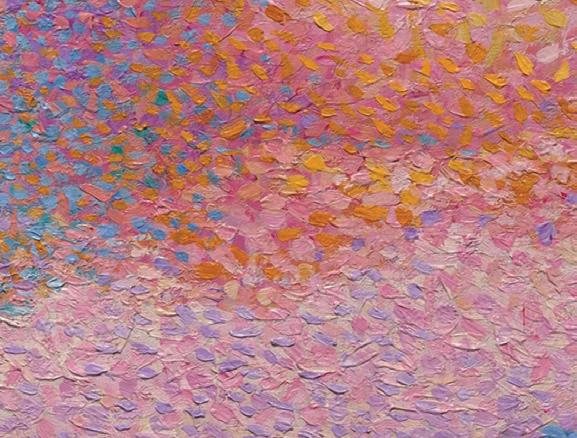







Open Now
Tickets at
CMA Members FREE
PHOTO CREDITS XXXX
IMPRESSIONISM
|
cma.org |
See this extraordinary collection of more than 100 masterworks—the largest gift of art to the museum in more than 60 years—together for the first and only time. The Cleveland Museum of Art is funded in part by residents of Cuyahoga County through a public grant from Cuyahoga Arts & Culture. This exhibition was supported in part by the Ohio Arts Council, which receives support from the State of Ohio and the National Endowment for the Arts. Henri-Edmond Cross (French, 1856–1910). The Pink Cloud, c. 1896. Oil on canvas; 54.6 x 61 cm. Nancy F. and Joseph P. Keithley Collection Gift, 2020.106
A SYMPHONY OFSuccess

We believe that all Cleveland youth should have access to high-quality arts education. Through the generosity of our donors, we are investing to scale up neighborhood-
that now serve 3,000 youth year-round in music, dance, theater, photography, literary arts and curatorial mastery. That’s a symphony of success.
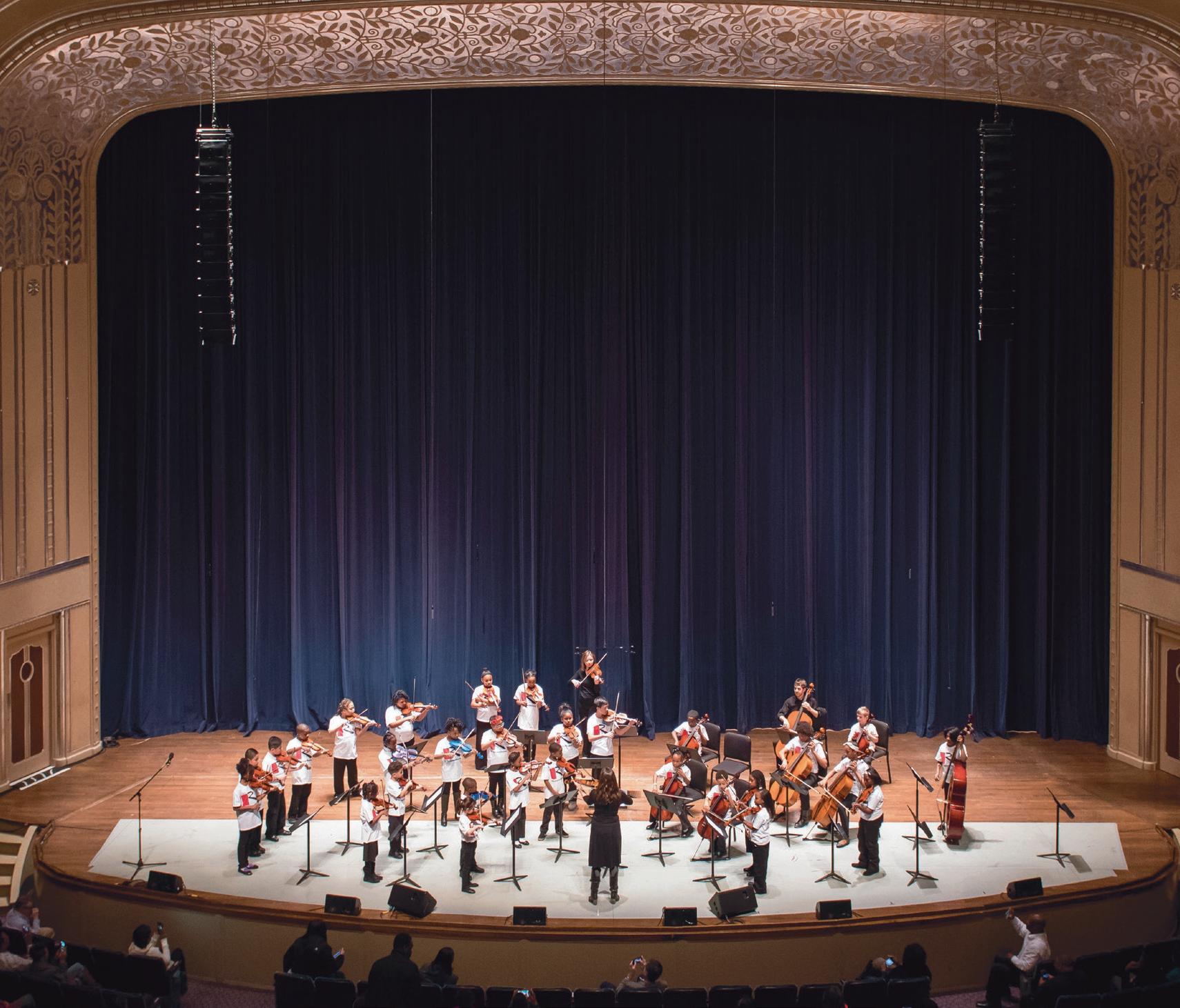
your passion, and partner with the Cleveland Foundation
make your greatest charitable impact.
based programs
Find
to
(877)554-5054 w ww.ClevelandFoundation.org Rainey Institute El Sistema Orchestra















































































































